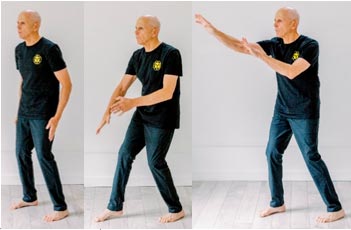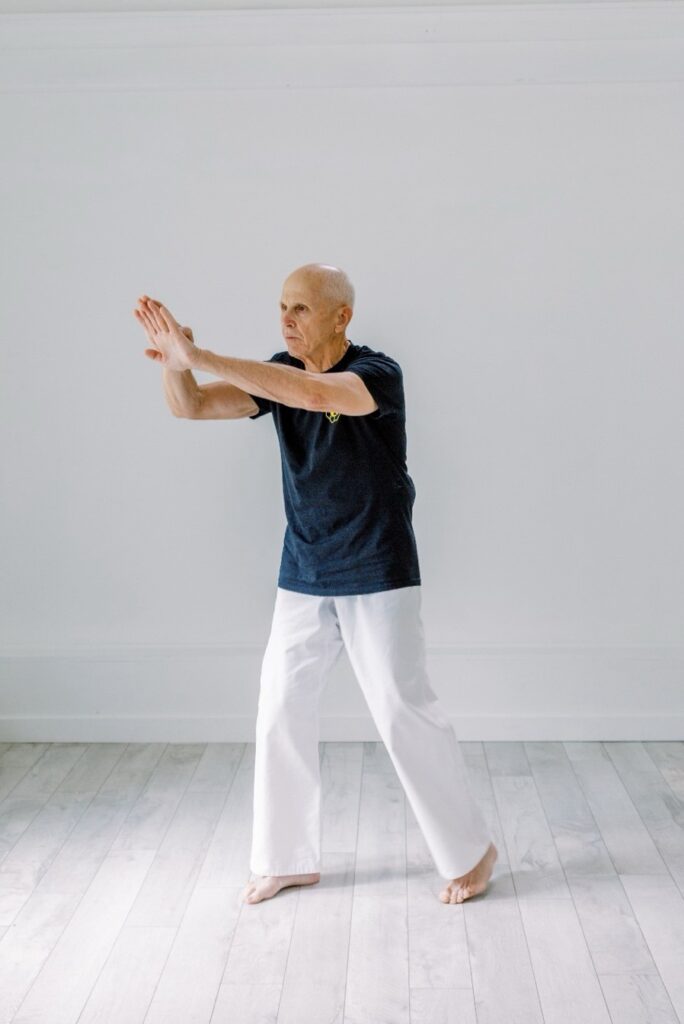By Justin Testa –
Many martial artists believe that learning more techniques makes them better prepared to defend themselves. However, it’s worth asking, “Am I truly better equipped to defend myself by mastering more and more techniques?” Complex movements and manipulations involve neuromuscular decisions, like “if this, then that,” and often require precise motor skills to perform correctly. To explore this, let’s first consider Hick’s Law.
Hick’s Law is a key principle from psychology that explains how the number of choices we have can influence how long it takes us to make a decision. It shows that as the number of options increases, decision time grows exponentially with the choices. In karate, Hick’s Law can also clarify why practicing a few simple techniques thoroughly is often the most effective approach for self-defense. When a martial artist faces more techniques or responses to choose from during a sudden violent attack, their reaction time naturally slows down, which can decrease their effectiveness. Hick’s Law highlights the importance of simplicity, muscle memory, and instinctive responses reactions.
For example, if an attacker suddenly approaches with the intent to seriously injure you, they might throw a haymaker or sucker punch, a flurry of wild punches to the head, a two-handed grab followed by a headbutt, a one-handed grab and punch, a violent push, a tackle, a knife attack, or other moves. The situation is completely unpredictable, and there could be multiple attackers. Having more options for these various scenarios increases reaction time, causes hesitation, and can lead to failure in execution. However, if you have one or two well-practiced responses, your reaction will be quick and instinctive, greatly improving your chances of surviving the attack.
When you’re physically attacked, your body doesn’t wait for you to think — it reacts automatically to survive. Your body activates the fight, flight, or freeze response, with an adrenaline rush that boosts strength and speed but reduces fine motor control. You might experience tunnel vision, and your thinking may shut down, so you depend on instinct and what you’ve practiced.
The flinch reflex is a crucial survival mechanism that enables the body to respond rapidly to potential threats. It’s an automatic, reflexive reaction to perceived dangers meant to protect the body from harm. This response is part of the body’s “startle reflex,” which is controlled by the brainstem and occurs without conscious thought. A startle response is the only thing faster than voluntary actions, which are consciously controlled by the brain and involve thought and decision-making.
Although you can’t completely eliminate your natural flinch responses, you can train your flinch reaction to effectively counter an attacker with practice. By incorporating flinching reactions into your training, you can turn this instinctive response into an advantage.
Among Uechi-Ryu’s arsenal of movements, one stands out as a cornerstone of the system’s strategy – the Hirate Mawashiuke, or wauke. Nearly all movement sequences within our kata begin with a wauke as we step in, pivot, or turn. The wauke also forms the foundation for other movements performed in all kata.
In analyzing the movements of the eight kata of Uechi-ryu, the wauke is performed approximately three times more often than the next most common movement, the nukite. Why is this the case? There is an underlying message from the creators of the system about the importance of this movement for self-defense. The wauke acts as the foundation for limiting the number of choices (Hick’s Law) in practical self-defense. It serves as a bridge to the follow-up strikes. If it is not performed well, the effectiveness of the subsequent strike is diminished.
As we develop the flinch action using both hands of the wauke, we directly move into the point of the attack with our arms and hands, “intercepting” the attack from any point. This lets us control the attack with a follow-through strike or integrate the counter directly with the intercepting action. The single-arm upper-rising boshiken movement and the two-handed “crane block” from Seisan are excellent flinch actions derived from the wauke.
A way to practice the “Wauke-Flinch” is to perform the movement starting from a neutral position with arms at your sides. See Appendix F from “Insights Into Uechi-Ryu Karate”, J. Testa, 2024.
When executing your kata and performing the various wauke–strike combinations, it is essential to acknowledge that the most crucial movement within this sequence is the wauke. Furthermore, it is important to understand the significance of the “flinch” action in self-defense and how the wauke prepares you for this function.
Justin Testa – Courtesy of the Mattson Academy of Karate



